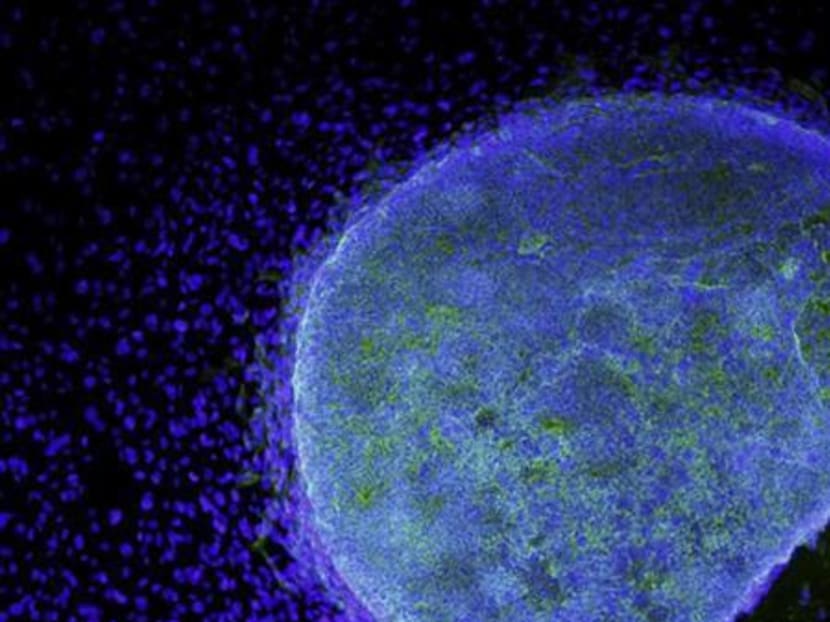Local scientists develop method to make human liver, pancreas cells
SINGAPORE — Scientists in Singapore have successfully developed a method to generate stem cells into a cell type that gives rise to organs, including the liver and pancreas, the Genome Institute of Singapore (GIS) at A*STAR said today (Jan 28).

A microscopic view shows a colony of human embryonic stem cells (light blue) growing on fibroblasts (dark blue) on March 9, 2009. Photo: Reuters
SINGAPORE — Scientists in Singapore have successfully developed a method to generate stem cells into a cell type that gives rise to organs, including the liver and pancreas, the Genome Institute of Singapore (GIS) at A*STAR said today (Jan 28).
This technique is an important step towards the use of stem cells in clinical applications, the scientists said.
Stem cells can generate over 200 distinct cell types in the human body. They respond to multiple external protein instructions to form other types of cells, making the manipulation of stem cells difficult.
The GIS researchers screened for proteins and chemicals that promote the formation of one desired cell type. They then blocked the induction of unwanted cell types, uncovering a combination of triggers that cause the stem cells to direct into other cells.
The team then used next-generation sequencing and bioinformatics to accurately characterise the transcriptional states and DNA elements of these cells.
The valuable cells produced and the insights gained from this work have brought stem cells one step closer to clinical translation and furthered basic research into the understanding of how cell fates are specified during stem cell differentiation, the scientists said.
“This unprecedented access to highly pure population of endodermal cells attracts pharmaceutical companies, who are interested in further making human liver cells to tests drug toxicities,” said Dr Bing Lim, Senior Group Leader and Associate Director of Cancer Stem Cell Biology at the GIS.
The study was done in collaboration with the Stanford University School of Medicine, the Stanford Institute for Stem Cell Biology & Regenerative Medicine, the Computational and Systems Biology group at the GIS, A*STAR’s Institute of Molecular and Cell Biology, the Murdoch Children’s Research Institute and Monash University, the Temasek Polytechnic, and the Cancer Science Institute of Singapore.





